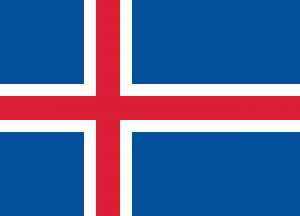Language/Icelandic/Grammar/How-to-Use-Be
Hi Icelandic learners! 😊
In this lesson, we will be discussing the basics of the Icelandic language, specifically on the topic of the verb "to be". Mastering the use of "be" is important because it is a central aspect of sentence construction in the language.
Before we start, let me introduce myself. My name is Þorgerður and I have been teaching Icelandic for 20 years. I am excited to share with you some interesting cultural facts about Iceland, as well as some fun tips and tricks to help you better understand the Icelandic language. So, let's get started!
After mastering this lesson, these related pages might interest you: Prepositions & Definite Article.
What is the Verb "To Be"?[edit | edit source]
The verb "to be" is one of the most important verbs in any language. In Icelandic, it is represented by the verb "vera". The verb "vera" is an irregular verb, meaning it does not follow a specific pattern when it is conjugated.
Conjugation of "Vera"[edit | edit source]
Here's how to conjugate "vera" in the present tense:
| Icelandic | Pronunciation | English |
|---|---|---|
| ég er | [jɛk ɛr] | I am |
| þú ert | [θuː ɛrt] | you are (singular) |
| hann/hún/það er | [haun/huːn/θaːð ɛr] | he/she/it is |
| við erum | [vɪð ɛrʏm] | we are |
| þið eruð | [θɪð ɛrʏð] | you are (plural) |
| þeir/þær/þau eru | [θeiːr/θaːr/θɔu ɛrʏ] | they are (masculine/feminine/neuter) |
Cases and Uses of "Vera"[edit | edit source]
"Vera" is an essential verb in Icelandic because it is used for many different functions, such as:
Identifying/Describing Objects, People, or Places[edit | edit source]
- Þetta er bók. ([ˈθɛʰta ɛr poʊk]) - This is a book.
Telling Time[edit | edit source]
- Klukkan er sex. ([ˈklʏʰan ɛr sɛks]) - The time is six o'clock.
Indicating Origin or Nationality[edit | edit source]
- Ég er Íslendingur. ([jeːɣ ɛr ˈiːslɛnˌtɪŋkʏr]) - I am Icelandic.
Describing a State or Condition[edit | edit source]
- Það er kalt úti. ([θaːð ɛr kalt ˈuːtɪ]) - It is cold outside.
Forming the Future Tense[edit | edit source]
- Ég verð að fara. ([jɛk vɛrt að fara]) - I will have to go.
Practice Dialogue[edit | edit source]
To help you understand the use of "vera" in context, let's have a practice dialogue:
- Person 1: Hvar er þú? ([hvar ɛr θuː]) - Where are you?
- Person 2: Ég er heima. ([jɛk ɛr ˈheɪma]) - I am at home.
- Person 1: Er þetta góður bíll? ([ɛr ˈθɛʰta ˈɡoːðʏr ˈpiːtl̥]) - Is this a good car?
- Person 2: Já, þetta er mjög góður bíll. ([jaː, ˈθɛʰta ɛr mjouːɣ ɡoːðʏr ˈpiːtl̥]) - Yes, this is a very good car.
Conclusion[edit | edit source]
Congratulations, you have learned the basics of how to use "vera" in Icelandic! Remember, practice makes perfect, so keep using the language as much as you can. To improve your Icelandic Grammar, you can also use the Polyglot Club website. Find native speakers and ask them any questions!
If you want to learn more about Icelandic Grammar, don't hesitate to check our other lessons on the same topic. Thank you for joining me on this journey to learn Icelandic! 😊
➡ If you have any questions, please ask them in the comments section below.
➡ Feel free to edit this wiki page if you think it can be improved. 😎
Having concluded this lesson, consider checking out these related pages: Articles & Plurals.
Videos[edit | edit source]
Icelandic Grammar: How to use SEM - YouTube[edit | edit source]
Other Lessons[edit | edit source]
- Definite Article
- Gender
- How to Use Have
- Plurals
- Nouns
- Negation
- Conditional Mood
- Icelandic Articles
- Articles
Sources[edit | edit source]
- Icelandic Grammar Reference: Icelandic grammar guide ...
- Icelandic grammar - Wikipedia
- How to use this reference | Icelandic Grammar Reference

